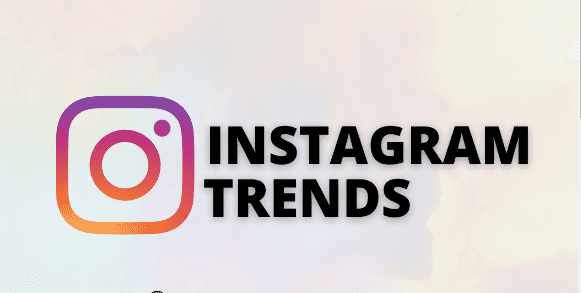Instagram is one of the leading digital platforms, and by 2023, it is predicted that it will be the scene of many directions. They include sustainable alternatives for fashion and beauty, support for the most diverse environmental and food causes, strengthening the metaverse, using digital platforms to earn money, and even a stage for raves.
This diverse list offers a glimpse of human behaviour on the social network, which has a large base of 1.44 billion users. We will better understand each point and try to discover how brands can take advantage of the opportunities the social network offers as trends for the year.
Support for social causes
According to the Instagram trends report, youth engagement in social causes will increase even more in 2023, especially in issues related to intellectual or physical disability. So, they want to follow an influencer with a particular need.
This trend was also encouraged by the arrival of Maxwell Frost, the first Gen Z politician in the United States. Hopefully, more young people will become aware of and advocate for these causes.
Concern for the environment
Times are changing. Consumers no longer want to hear “sustainability” or “environmentally friendly” words. They want attitudes that create impact.
Furthermore, 82% of consumers expect brands to prioritize both forces: people and planet, over profit. Therefore, companies should act to have a better performance in the market.
Network monetization
Generation Z is increasingly financially conscious. In 2023, 85% of young people plan to acquire new skills, and 25% of social network users want to increase their knowledge on the subject.
That same year, many wanted to turn their passion into projects that generate income through monetizing their content.
Face-to-face experiences
By 2023, nearly one-third of Millennials are expected to be interested in participating in face-to-face experiences. This will likely lead to the growth of communities of creators and fans as they team up with influencers.
In addition, content created for different platforms, for example, podcasts, is expected. Trend Report 2023 shows that teens are interested in greater media diversity to enjoy content from their favourite influencers.
Equity in the Metaverse
Generation Z plans to create new worlds through the metaverse to express their individuality and promote equality in digital spaces. For example, 67% of this group believe that avatars should reflect a more significant number of body, clothing and skin tone varieties by 2023.
In addition, the rise of virtual influencers can provide real-world inspiration.
Union of borders through gastronomy
68% of users who use Instagram are exploring culture through food. They have been using viral content and niche creators to discover typical foods from other cultures and consequently want to try them.
Thus, the network has served as a gateway for these young people to approach other cultural expressions, with taste being the chosen path.
Social commerce growth
At the start of the pandemic in 2020, the use of live shopping on social media started to become more common. Living on Instagram and YouTube to share commercial content became part of everyday life.
Although Instagram still does not have its feature for social commerce, TikTok, YouTube, and WhatsApp already offer tools of this type. The trend is that Instagram will also launch some news in this regard.
In 2022, chat purchases were launched in the United States, which can be seen as part of a test to verify public acceptance of buying and paying for products and services directly on the platform.
Consumption of beauty and skincare products
Young people are increasingly aware of climate change’s impacts, which has generated an increase in demand for skin care products. For 2023, they will invest in sunscreens and make-up that contain activities that are beneficial to health.
Also, beauty products become an essential part of self-expression for them, who use these items to show their personality, create experimental looks and feel more comfortable.
Recycle, reuse, rebuild
Creativity has been driven to contribute to the environment and inspire friends and followers on social networks. DIY (do it yourself) has become a sustainable trend, as it encourages the reuse of old materials and garments and the production of products that do not harm the planet.
An example is adopting DIY for clothes in 2023.
AI in post recommendations
In 2023, Artificial Intelligence (AI) will be even more prominent. Facebook and Instagram, for example, will increase their use for user engagement.
This social media platform adds features to display more recommended content in people’s newsfeeds. Thus, it will be possible to enjoy a discovery experience very similar to that offered by TikTok, with the “For you” section.
More integrations on social media platforms
According to Social Media, integrations are becoming increasingly popular on social media platforms. Facebook, for example, is working on creating digital avatars to encourage engagement, including in the metaverse.
Instagram also strives to create different forms of content to support creators and enable them to make for the same universe. Other social media platforms may follow the same trend.
Strength for interactive ads
Augmented Reality (AR) and Virtual Reality (VR) technologies are opening up new opportunities for user engagement. One widespread use of these technologies is filters — but they can also deliver even better shopping experiences to a brand’s audience through interactive ads.
Unlike advertising blocked by blockers or ignored, these ads allow users to engage with the advertising experience. This increases the likelihood that they will engage with the brand or product.
In addition to extending consumers’ watch time, using interactive ads also helps improve brand awareness.
Nano-influencer and micro-influencer marketing
Rather than relying on big names on social media, brands and consumers increasingly turn to nano and micro-influencers who offer authentic experiences with higher engagement.
These influencers have a relatively small number of followers but tend to have a higher engagement rate, i.e. 8.7%, than macro influencers. As a result, in the coming years, brands will take a community-led approach, working with nano and micro-influencers.
Humans promoting brands
In 2022, some brands, like Dove, encouraged their audience to create content and participate in campaigns to increase user engagement. For 2023, this trend may grow even more, with companies using humanization to promote authenticity and engagement.
Still, we can expect them to use more relaxed strategies to relate to their followers through a more conversational tone. Using images that represent more proximity to users should grow instead of the usual stereotypes we are used to seeing.
Growth of gaming as an alternative to social media platforms
The gaming industry’s growth, projected to reach $321 billion by 2026, is driven by people looking for new ways to have fun. In addition, the growing popularity of augmented reality (AR) and virtual reality (VR) games also contributes to the industry’s improvement.
Due to their greatness, game development companies offer ample opportunities for brands to leverage their potential to foster social interactions and community engagement. While nothing is definitive about this, we can start seeing brands exploring this scenario to build relationships.
Possibilities in decentralized networks
The coming years will bring a viable alternative to the leading social media platforms: decentralized social networks. This is mainly due to the need for more censorship and user control. From 2023, these networks will become even more popular as people want more privacy.
These platforms are already emerging, such as Minds, which is open source, in competition with Facebook and Instagram. There is also Mastodon, an alternative to Twitter; LBRY, an option compared to YouTube; Diaspora, compared to Facebook; and Signal, compared to WhatsApp and Messenger.
The gradual elimination of third-party cookies
By 2023, it is predicted that we will see the end of third-party cookies. Although they have allowed customization of the user experience, there are growing concerns about privacy, and consumers are tired of intrusions.
For brands and social media platforms, this means that they must create credible solutions of their own, as well as invest in consumer privacy and transparency.
Since the GDPR and LGPD have already been created, we can expect new laws and regulations to be developed worldwide.
For Guest Post: https://blogozilla.com/



